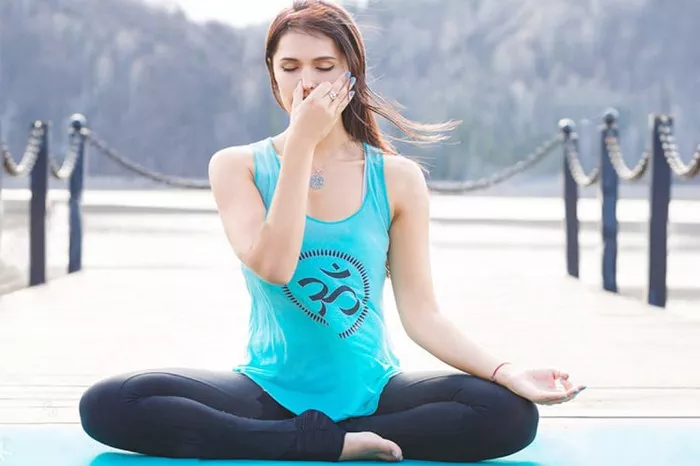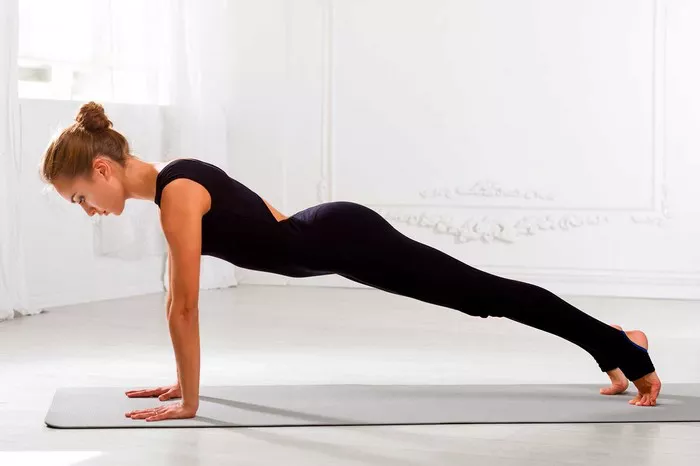Pranayama, an integral aspect of Hatha Yoga, encompasses various breathing techniques aimed at regulating the breath and enhancing vital energy within the body. Rooted in ancient yogic traditions, Pranayama techniques are designed to purify the mind, body, and spirit. In this article, we delve into eight fundamental Pranayama techniques practiced in Hatha Yoga, elucidating their methods and significance.
1. Anulom Vilom (Alternate Nostril Breathing)
Anulom Vilom, also known as Nadi Shodhana Pranayama, is a balancing technique that harmonizes the flow of prana (life force energy) through the nadis (energy channels). To practice Anulom Vilom, sit comfortably in a cross-legged position. Close your right nostril with your right thumb and inhale deeply through the left nostril. Then, close the left nostril with your ring finger and exhale through the right nostril. Continue this alternate pattern, focusing on smooth, controlled breaths. This technique purifies the nadis, balances the hemispheres of the brain, and induces a state of mental clarity.
2. Kapalabhati (Skull Shining Breath)
Kapalabhati Pranayama is a dynamic breathing exercise that involves rapid exhalations followed by passive inhalations. Sit with a straight spine and take a deep inhalation. Then, forcefully exhale through the nose by contracting the abdominal muscles. The inhalation should occur naturally as the abdomen relaxes. Repeat this pumping action rhythmically, focusing on the forceful exhalations. Kapalabhati increases oxygen supply, removes toxins from the body, and invigorates the mind.
3. Bhastrika (Bellows Breath)
Bhastrika Pranayama, akin to the bellows of a blacksmith, involves rapid and forceful inhalations and exhalations. Sit in a comfortable position with your hands resting on your knees. Inhale deeply and rapidly through the nostrils, expanding the chest and abdomen. Exhale forcefully, contracting the abdominal muscles to expel the air completely. Continue this vigorous breathing pattern, maintaining a steady rhythm. Bhastrika increases lung capacity, energizes the body, and balances the doshas (energetic constitutions) according to Ayurveda.
4. Ujjayi (Victorious Breath)
Ujjayi Pranayama is characterized by the soft hissing sound produced by slightly constricting the back of the throat during inhalation and exhalation. Sit in a comfortable position and relax your shoulders. Inhale deeply through the nose while slightly contracting the throat to create a whisper-like sound. Exhale slowly and audibly through the nose, maintaining the constriction in the throat. Focus on the sound and sensation of the breath as it flows in and out. Ujjayi Pranayama enhances concentration, soothes the nervous system, and generates internal heat.
5. Sheetali (Cooling Breath)
Sheetali Pranayama is a cooling technique that involves inhaling through the rolled tongue or pursed lips to draw in cool air. Sit comfortably with a straight spine and relax your facial muscles. Roll your tongue into a tube or purse your lips, creating a small opening. Inhale deeply through the mouth, allowing the breath to cool the tongue and throat. Close the mouth and exhale slowly through the nose. Repeat this cycle, focusing on the cooling sensation with each inhalation. Sheetali Pranayama reduces body heat, calms the mind, and alleviates stress.
6. Sheetkari (Hissing Breath)
Sheetkari Pranayama is a variation of Sheetali, where the breath is drawn in through the teeth instead of the rolled tongue. Sit comfortably and close your eyes. Press your upper and lower teeth together and part your lips slightly. Inhale slowly and deeply through the teeth, allowing the breath to produce a hissing sound. Exhale slowly through the nose, maintaining a relaxed jaw. Repeat this process, focusing on the cooling sensation and sound of the breath. Sheetkari Pranayama regulates body temperature, purifies the blood, and enhances mental clarity.
7. Bhramari (Bee Breath)
Bhramari Pranayama derives its name from the humming sound resembling the buzzing of a bee produced during exhalation. Sit in a comfortable position and close your eyes. Place your index fingers on the cartilage between the cheeks and ears. Inhale deeply through the nose, and as you exhale, gently press the cartilage, creating a soft humming sound. Focus on the vibration and resonance within the head and chest. Repeat this process, allowing the sound to soothe the mind and calm the nervous system. Bhramari Pranayama alleviates anxiety, induces relaxation, and promotes inner peace.
8. Surya Bhedana (Sun Piercing Breath)
Surya Bhedana Pranayama is a heating technique that involves inhaling through the right nostril and exhaling through the left nostril. Sit comfortably and close your eyes. Close the left nostril with the ring finger of your right hand. Inhale deeply through the right nostril, filling the lungs with breath. Then, release the left nostril and exhale slowly and completely. Repeat this process, focusing on the heat generated within the body. Surya Bhedana Pranayama increases energy levels, stimulates digestion, and activates the solar energy in the body.
Conclusion
Pranayama techniques are profound tools for enhancing physical, mental, and spiritual well-being. Through consistent practice, individuals can cultivate a deeper connection with their breath, harness vital energy, and attain a state of inner balance and harmony. Incorporate these eight types of Pranayama into your Hatha Yoga practice to experience their transformative effects on your overall health and vitality.




















